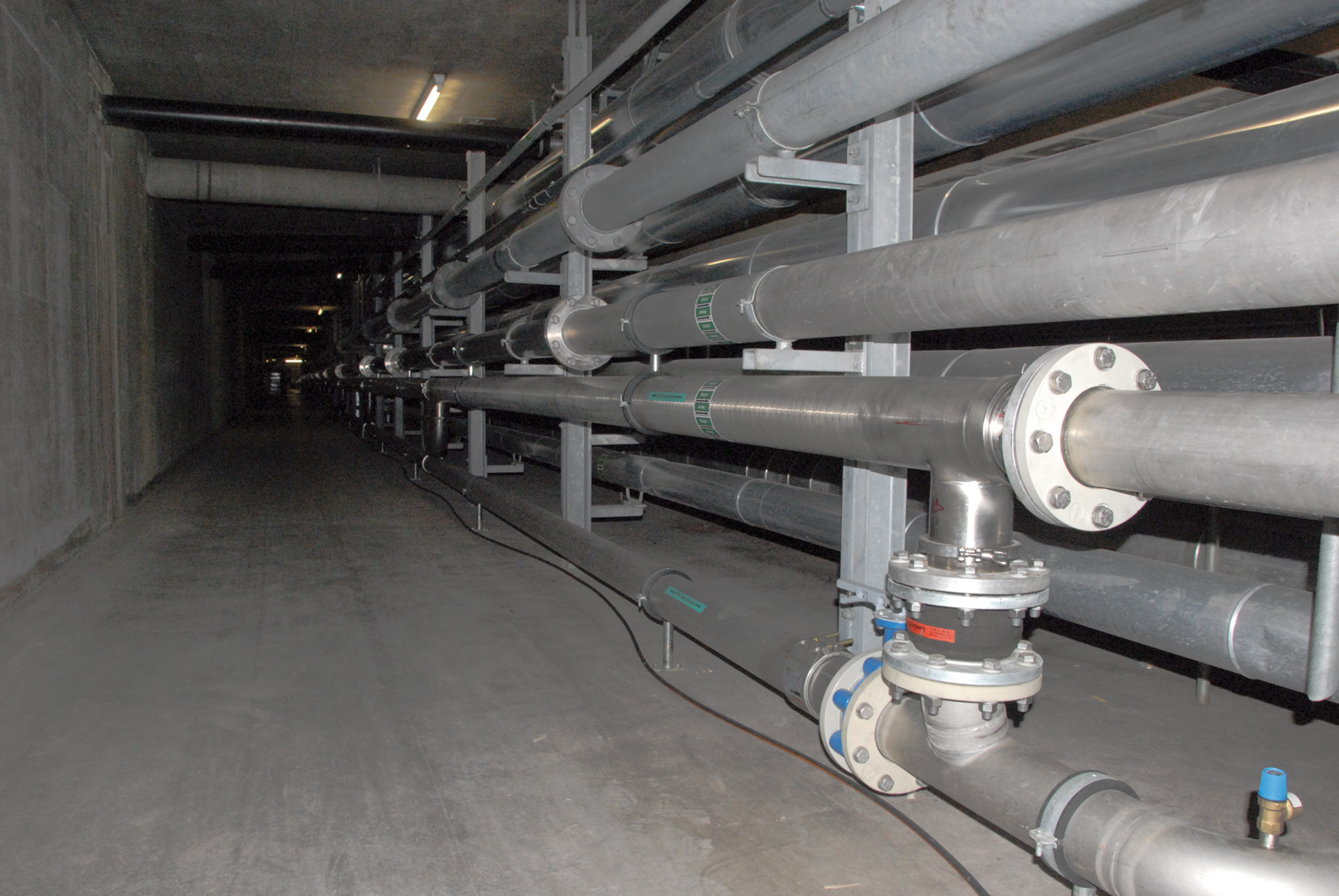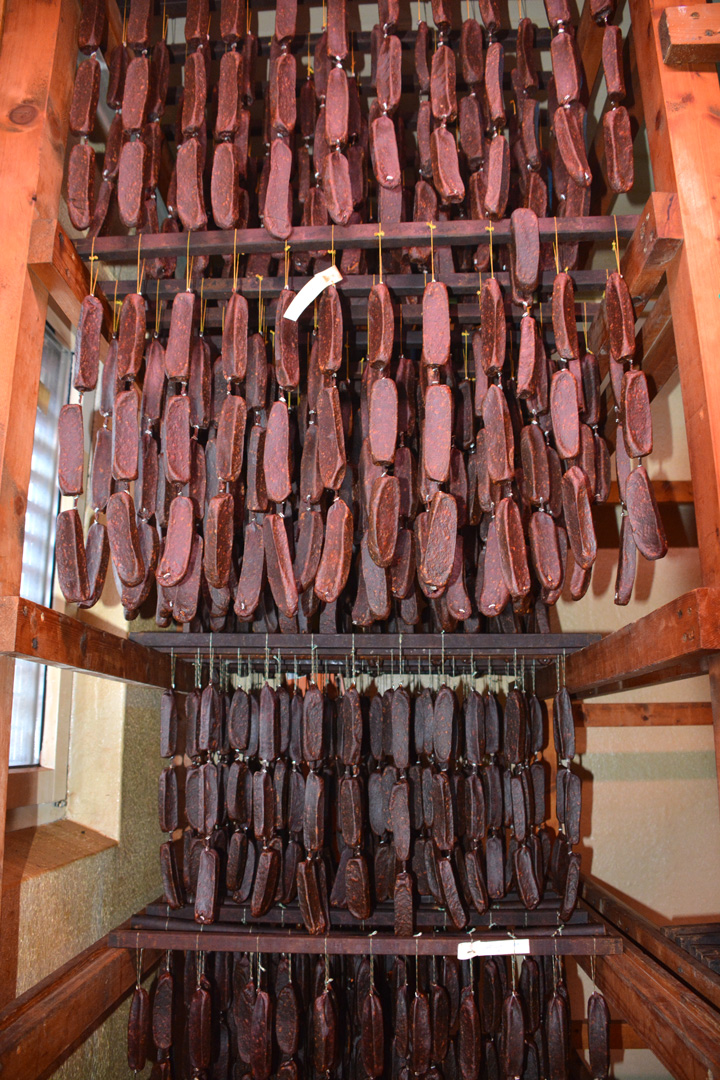Innovations
Decentralised domestic hot water preparation BWW++
The "Domestic hot water storage BWW++" research project is developing a compact system for decentralised domestic hot water preparation in residential buildings. It is based on a decentralised heat pump (eXergy machine), a decentralised latent heat storage unit and a fresh water module.
Domestic hot water preparation aims to reduce energy consumption in buildings
The greatest potential for reducing the energy consumption of buildings lies in space heating and domestic hot water preparation. As part of the "Domestic hot water storage BWW++" research project run by the Competence Centre for Thermal Energy Storage (HSLU) and BMS Energietechnik AG, a novel system for decentralised domestic hot water preparation is being developed. This includes an eXergy machine that draws its evaporation energy from the heating circuit in winter or from room heat in summer and operates a fresh water module via a latent heat storage tank. The aim is to optimally combine hygiene and energy efficiency: drinking water standards are to be met and energy consumption in this area drastically reduced.
eXm®-compact
eXergymachine for smaller applications
BMS-Energietechnik AG and varmeco GmbH & Co.KG now offer a further development of the eXergymachine (eXm®): the eXm®-compact. This smaller version increases, for example, the energy efficiency of hot water production in systems with heat pumps or solar energy in single-family and multi-family homes as well as in small businesses...
The new eXergymachine (eXm®) compact is a "heat booster" for single-family homes and apartment buildings from varmeco and BMS-Energietechnik and works in combination with one or two heating water buffer tanks. The machine draws water at a medium temperature (e.g. 45 °C) from the tank, heats part of it and supplies it at 60 °C or more – hot enough for hot water production. The other part of the water is cooled and ensures a cool return flow to the heat source. This ensures higher efficiency in solar systems, local heating networks or heat pumps, for example.
The device is mounted on the wall to save space and is suitable for renovation or retrofitting in existing heating systems.
Raise the flow temperature, lower the return temperature
The ideal condition for an efficient heating system, a wide temperature spread between the flow and return, is rarely achieved in practice – except with the eXergiemaschine. This new development from heating specialists varmeco and BMS-Energietechnik makes the ideal the norm. The eXergy machine is a water-water heat pump that is designed for higher temperatures than a normal heating heat pump and offers a very large temperature lift.
The eXergymachine lowers the return temperature and/or provides higher flow temperatures, regardless of user behaviour. Various applications benefit from this temperature spread: district heating, local heating and condensing boiler systems can be operated at a low return temperature, waste heat reaches a usable temperature level and heat pumps or solar collectors deliver more usable heat from renewable energy. This increases efficiency and protects the climate. Apart from the eXergy machine, all that is required is a heating buffer storage tank (system) in which the temperature stratification is optimised.
BMSpower® module technology: How it all began
BMS-Energietechnik AG has been implementing projects in which both cooling AND heating are generated for 40 years. The BMS power® module is used, which provides thermal energy on the cold and/or warm side as required. Company founder Remo Meister reports on how the idea came about...
Simple and safe: our patented module technology
"Starting out as a refrigeration engineer, I spent almost all my time repairing faults in refrigeration and air conditioning systems and heat pumps, and saw what the failure of such systems can mean: high costs, loss of production, delivery problems and even loss of customers.
These experiences prompted me to develop systems with new approaches. My vision: customers receive the safest, simplest and smallest refrigeration and air conditioning systems and heat pumps that are cost-efficient, low-maintenance and energy-saving. In addition, these systems should offer more flexibility in order to be able to respond to changing needs. Adjusting performance or changing location should therefore not pose any problems.
This idea gave rise to the BMSpower modules, which have now proven themselves in many different applications. They utilise the cold and warm sides of the refrigeration cycle and therefore enable greater efficiency than the separate provision of heating and cooling.
Remo Meister, founder, owner and technical director of BMS
Energy from waste water
Instead of investing huge sums in renewable energies, companies can also consider energy-efficient systems and products. These often involve lower investment costs and pay for themselves more quickly, according to Managing Director Roman Aebersold – for example, heat recovery from wastewater...
Energy efficiency in companies – thanks to heat recovery from wastewater
Energy resources are becoming scarcer. Energy consumption by companies and private individuals continues to rise. A lot of money and resources are being invested in renewable energies to continue to meet energy consumption. However, many large-scale projects for generating renewable energy repeatedly encounter resistance, whether it be the raising of dam walls or the large-scale generation of wind and solar energy. In contrast, the efficient use of resources is not discussed enough, at least in public, even though it is more obvious and easier to increase energy efficiency first than to look for more energy sources.
Energy-efficient systems and products can save energy and money in industry, supermarkets and large buildings. Investments in energy efficiency often pay for themselves within one to three years, and the energy savings flow directly into the coffers of the plant operators.
Heating fresh water or heating water almost free of charge
A good example of this is heat recovery from waste water. Compared to a solar power plant, such a system can save more money with a low investment.
Cost comparison of renewable energy and heat recovery
Since 2005, BKW FMB Energy Ltd has been operating the world's largest stadium-integrated solar power plant on the roof of the Stade de Suisse in Bern. Around 7,000 solar panels are installed on a roof area of 12,000 m2. Under optimal sunlight conditions, they have an output of 1,300 kilowatts. Over the course of a year, around 1.2 million kWh of electricity are produced at the Stade de Suisse, enough to cover the annual needs of 400 households. The investment amounted to over ten million Swiss francs.

Many industrial processes, as well as buildings, hotels, hospitals, homes, wellness facilities and swimming pools, produce warm waste water. The residual energy from this water can be used to
heat fresh water or heating water at virtually no cost. The following example shows that investing in this relatively simple technology pays off quickly: three years after the solar power plant at the Stade de Suisse went into operation, a heat recovery system for waste water was commissioned at the Emmi company in Ostermundigen, Bern. Currently, around 3.6 million kWh of energy are recovered annually. This corresponds to the annual requirements of 1,200 households. Compared to the Stade de Suisse, Emmi in Ostermundigen saves around three times as much energy annually as is produced on the roof of the Stade de Suisse, and this with 36 times lower investment costs. The savings in gas consumption and CO2 emissions amounted to CHF 351,000 in the first two years of operation. This means that the new plant at Emmi paid for itself after just 18 months.
However, this does not mean that generating green electricity is not worthwhile. It is not a question of either/or, but rather of acting according to the motto "do one thing and don't neglect the other" – and exploiting the efficiency potential in your own system, such as reducing consumption or recovering energy.
Author: Roman Aebersold

Case study: Producing meat products in Graubünden with less energy
The Mark butcher's shop in Graubünden needed a new overall refrigeration concept that would provide cooling capacity and plenty of hot water. Since the refrigeration systems were renovated, the energy savings have been so great that they even puzzled the electricity supplier...
Producing the finest meat products (more) energy-efficiently
High-quality meat, impeccable hygiene and optimal cooling of butchery products are rerequisites for success with consumers. In 1990, Andy Mark laid the foundation for this as a one-man operation in a former farm in Schiers-Lunden. Mark's Graubünden meat specialities quickly became well known and popular. Until the fine products have reached their peak of flavour and go on sale, they are carefully stored in special maturing rooms.

Specialities and cooling
High-performance, reliable cooling is necessary to ensure that the meat specialities from Schiers achieve their high quality. Temperatures and humidity must be maintained without fluctuations.
Until a few years ago, the cooling, deep-freeze and climate-controlled rooms were supplied by decentralised refrigeration systems. The cooling system grew along with the permanent expansion of the speciality business, but there was no overall concept for cooling. Mark was ultimately faced with a central problem: the existing system did not produce enough hot water for the important cleaning process.
New overall concept
The company Kälte 3000 AG from Landquart developed an overall concept for Mark. This included centralising the entire refrigeration system, including waste heat utilisation and hot water preparation by means of a fresh water station. The waste heat from the individual refrigeration units is fed into three storage tanks, each with a capacity of 800 litres. The contents of the storage tanks are used to supply the heat exchanger of a fresh water station. This is designed to ensure that Mark has sufficient hot water available at all times, even during slaughter days. In combination with the fresh water system storage tank, a fresh water station guarantees a constant supply of fresh hot water without waiting times or temperature fluctuations, and in any quantity required, thanks to its temperature control system.


The right fresh water station
BMS-Energietechnik was consulted to design the fresh water station and considered each building individually. Calculation programmes were used to determine the exact demand figures on the basis of DIN 4708 (residential buildings) and DIN 1988 (other buildings). Based on this and using the program's long-term experience values, the size of the fresh water stations, the storage tanks and the required connection capacities were calculated.
According to Roman Aebersold, Managing Director of BMS Energietechnik AG, fresh water stations are particularly useful when their use is already incorporated into the planning stage. For correct design, information about hot water requirements, the heating system and the type of use is required. This allows compact and inexpensive systems to be implemented, which guarantee constant outlet temperatures and flow rates.
A butcher's shop with a slaughterhouse has very high hot water requirements for hygiene reasons alone. A fresh water station is an excellent solution here. Thanks to the new hot water system, savings can also be achieved here, says Aebersold.
Investment pays off quickly
As with all investments, the question of profitability arises: Mark's electricity consumption has fallen by around 100,000 kWh compared to before. With a construction cost of around CHF 50,000 (including construction work), the investment in the new system has paid for itself within 3.5 years. Mark reports: "It even got to the point where the electricity supplier contacted us and asked if everything was OK with the business. Electricity consumption had fallen sharply compared to previous years."
Author: Andreas Widmer

